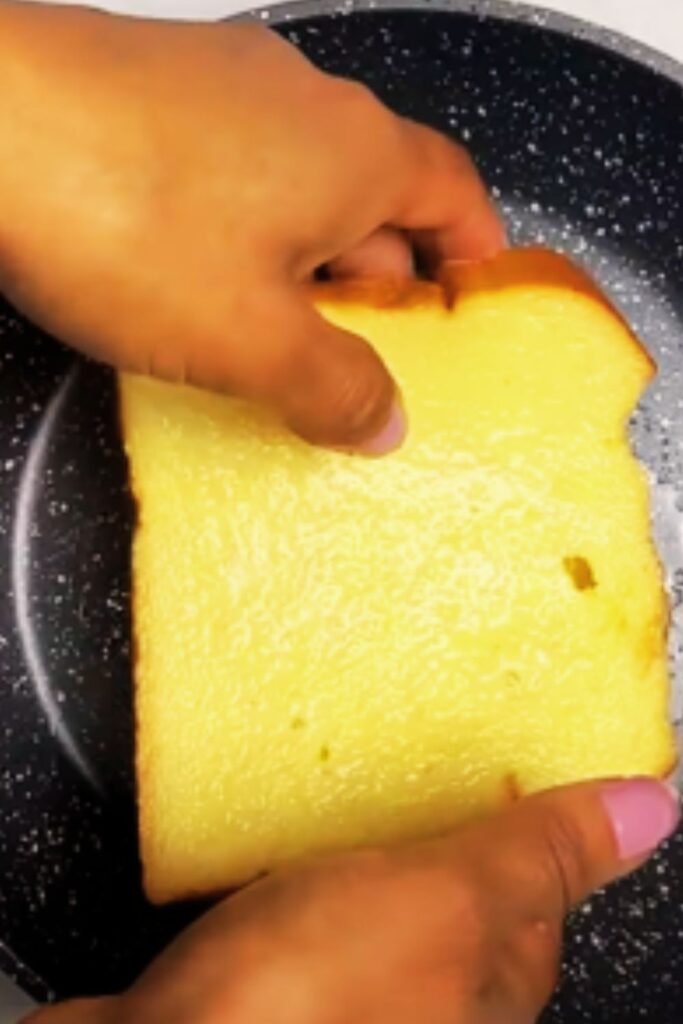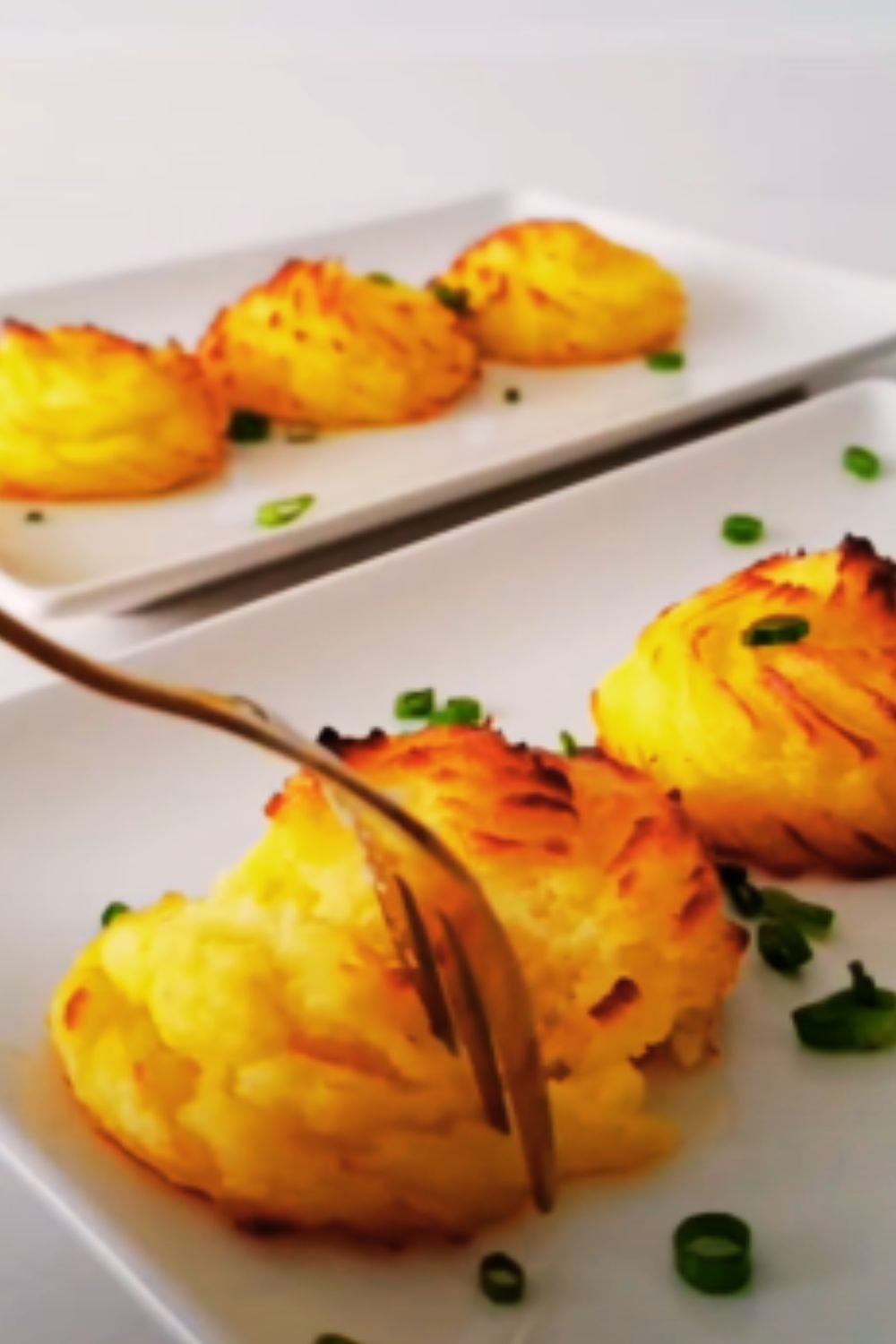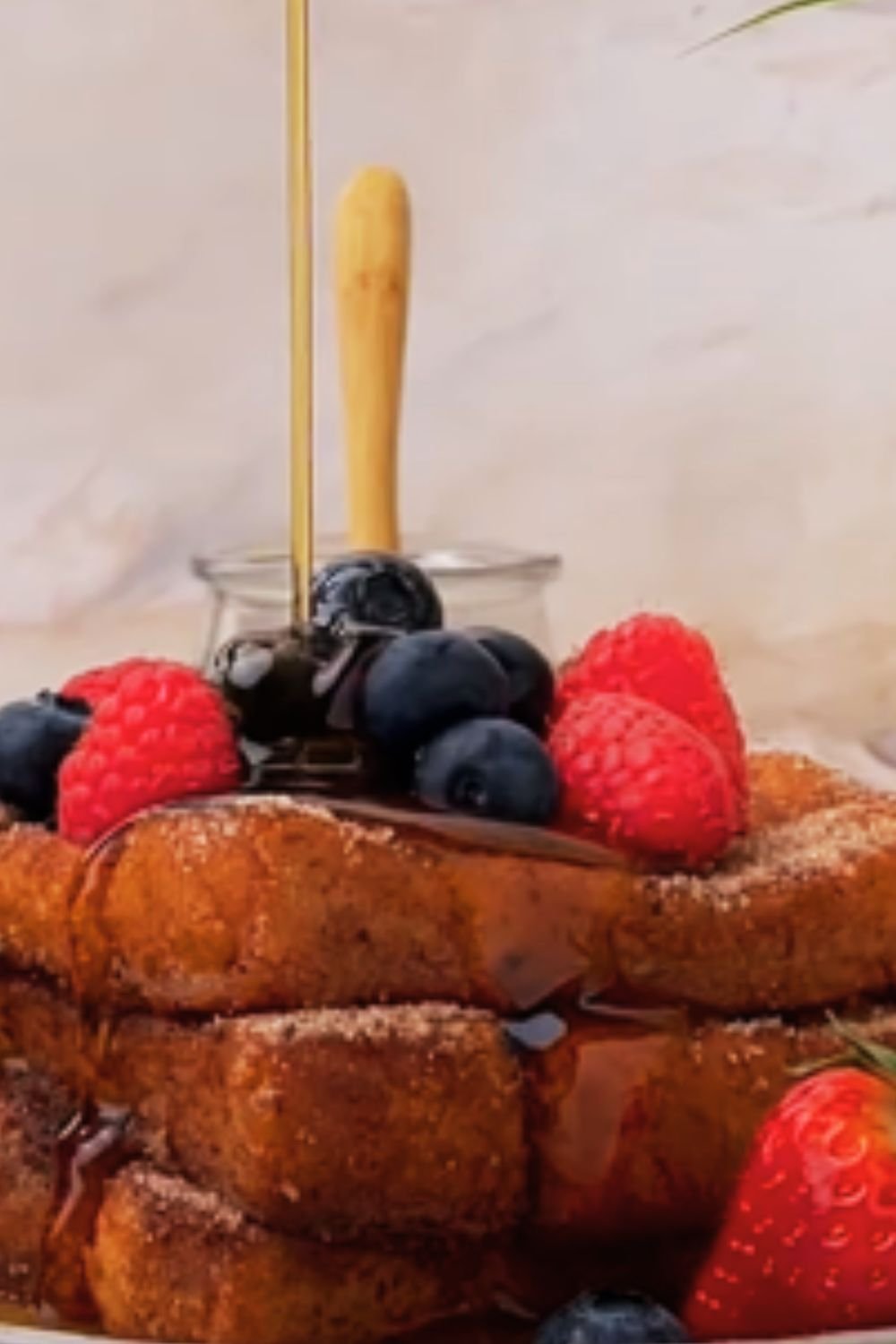There’s something magical about the holidays that transforms ordinary breakfast into extraordinary moments. When I first discovered eggnog French toast, it was during a snowy December morning when I had leftover eggnog from my holiday party. What started as an experimental breakfast became my family’s most requested holiday tradition.
Eggnog French toast combines the rich, creamy texture of traditional eggnog with the comforting warmth of classic French toast. The result is a breakfast that tastes like the holidays wrapped in golden, custardy perfection. This isn’t just French toast with a twist – it’s a complete transformation that elevates your morning meal into something truly special.
The beauty of this recipe lies in its simplicity and the way it captures the essence of the holiday season. Every bite delivers the familiar flavors of nutmeg, cinnamon, and vanilla that we associate with cozy winter mornings and family gatherings.
Understanding Eggnog French Toast
Definition List: Key Components
Eggnog: A rich, creamy beverage traditionally made with eggs, cream, sugar, and spices like nutmeg and cinnamon. In this recipe, it serves as the base for our custard mixture.
French Toast Custard: The mixture that bread is soaked in, typically containing eggs, milk or cream, sugar, and flavorings. Here, eggnog replaces much of the traditional dairy.
Challah Bread: A rich, eggy bread that’s ideal for French toast due to its sturdy structure and ability to absorb custard without falling apart.
Nutmeg: A warm spice that’s essential to eggnog’s signature flavor profile and adds aromatic depth to the dish.
Vanilla Extract: Enhances the sweet, custard-like qualities of the eggnog and complements the other spices.
Essential Ingredients and Their Roles
The success of eggnog French toast depends heavily on using quality ingredients in the right proportions. I’ve learned through years of experimentation that each component plays a crucial role in achieving the perfect texture and flavor balance.
Main Ingredients Analysis
| Ingredient | Quantity | Purpose | Substitution Options |
|---|---|---|---|
| Store-bought Eggnog | 1 cup | Primary flavor base and liquid | Homemade eggnog, heavy cream + spices |
| Large Eggs | 3 whole | Binding and richness | Egg substitute (¾ cup) |
| Whole Milk | ½ cup | Texture balance | Half-and-half, almond milk |
| Vanilla Extract | 1 teaspoon | Flavor enhancement | Vanilla bean paste, rum extract |
| Ground Cinnamon | ½ teaspoon | Warmth and spice | Pumpkin pie spice |
| Ground Nutmeg | ¼ teaspoon | Signature eggnog flavor | Fresh grated nutmeg |
| Salt | Pinch | Flavor enhancement | Sea salt, kosher salt |
| Thick Bread Slices | 8 pieces | Foundation | Brioche, Texas toast |
Bread Selection Guide
| Bread Type | Absorption Rate | Texture Result | Best For |
|---|---|---|---|
| Challah | Excellent | Custardy center, crispy exterior | Traditional preparation |
| Brioche | Very Good | Rich, buttery flavor | Luxury version |
| Texas Toast | Good | Sturdy structure | Beginner-friendly |
| Day-old French Bread | Excellent | Classic texture | Budget-conscious |
| Sourdough | Moderate | Tangy contrast | Unique flavor profile |
Step-by-Step Preparation Method
Creating perfect eggnog French toast requires attention to detail and proper technique. I’ve refined this method over countless holiday mornings to ensure consistent, delicious results every time.
Preparation Steps
- Custard Mixture Creation
- Whisk together eggnog, eggs, milk, vanilla, cinnamon, nutmeg, and salt in a shallow dish
- Ensure complete integration of spices to avoid uneven flavor distribution
- Let mixture rest for 5 minutes to allow spices to bloom
- Bread Preparation
- Select bread that’s 1-2 days old for optimal absorption
- Cut slices to ¾-inch thickness for best results
- Arrange bread in single layer for even soaking
- Soaking Process
- Submerge each slice in custard mixture for 30-45 seconds per side
- Press gently to encourage absorption without breaking bread
- Allow excess custard to drip off before cooking
- Cooking Technique
- Preheat griddle or large skillet to medium heat
- Add butter and let it foam but not brown
- Cook each slice 3-4 minutes per side until golden brown
- Maintain consistent temperature to prevent burning

Temperature and Timing Guidelines
Achieving the perfect eggnog French toast requires precise temperature control and timing. These parameters ensure your bread cooks evenly while developing that beautiful golden crust.
Cooking Temperature Chart
| Cooking Surface | Temperature Setting | Visual Indicators | Cooking Time Per Side |
|---|---|---|---|
| Electric Griddle | 350°F | Water droplets dance | 3-4 minutes |
| Gas Stovetop | Medium | Butter foams steadily | 3-5 minutes |
| Cast Iron Skillet | Medium-Low | Gentle sizzling | 4-5 minutes |
| Non-stick Pan | Medium | Even heat distribution | 3-4 minutes |
Flavor Variations and Customizations
One of the aspects I love most about eggnog French toast is its versatility. Over the years, I’ve developed several variations that cater to different tastes and dietary needs.
Spice Enhancement Options
- Extra Warming Spices: Add ⅛ teaspoon each of allspice and cardamom
- Citrus Twist: Include 1 teaspoon orange zest in the custard mixture
- Rum Flavor: Replace vanilla with rum extract for adult appeal
- Maple Enhancement: Add 2 tablespoons pure maple syrup to custard
Dietary Adaptations
| Dietary Need | Modification | Notes |
|---|---|---|
| Dairy-Free | Use coconut eggnog + plant milk | Slightly different texture |
| Reduced Sugar | Sugar-free eggnog + stevia | Taste test for sweetness |
| Gluten-Free | GF bread + extra soaking time | May need gentle handling |
| Egg-Free | Commercial egg replacer | Follow package ratios |

Topping and Serving Suggestions
The right toppings can transform good eggnog French toast into an unforgettable breakfast experience. I’ve experimented with countless combinations to find the perfect accompaniments.
Classic Topping Combinations
Traditional Holiday Stack:
- Pure maple syrup warmed with a cinnamon stick
- Freshly whipped heavy cream with vanilla
- Light dusting of powdered sugar
- Fresh nutmeg grated tableside
Fruit-Forward Presentation:
- Caramelized apples with brown butter
- Fresh winter berries
- Pomegranate seeds for color and crunch
- Honey drizzle
Indulgent Weekend Version:
- Cream cheese glaze made with powdered sugar
- Candied pecans or walnuts
- Salted caramel sauce
- Vanilla bean ice cream
Nutritional Topping Analysis
| Topping Category | Calories per Serving | Key Benefits | Best Pairing |
|---|---|---|---|
| Fresh Fruit | 25-50 | Vitamins, fiber | Light syrup |
| Nuts/Seeds | 80-120 | Healthy fats, protein | Honey |
| Syrups | 50-100 | Quick energy | Minimal other toppings |
| Dairy Toppings | 60-150 | Calcium, richness | Fruit balance |
Storage and Reheating Instructions
Proper storage techniques ensure your eggnog French toast maintains its quality for future enjoyment. I’ve tested various methods to find the most effective approaches.
Storage Methods Comparison
| Storage Method | Duration | Quality Retention | Reheating Instructions |
|---|---|---|---|
| Refrigerator | 3-4 days | Good texture | Toaster oven 5-7 minutes |
| Freezer | 2-3 months | Excellent if wrapped well | Thaw overnight, then reheat |
| Room Temperature | 2 hours maximum | Best fresh | Serve immediately |
Make-Ahead Strategies
Night-Before Preparation:
- Prepare custard mixture and store covered in refrigerator
- Slice bread and store in airtight container
- Combine in morning for fresh results
Batch Cooking Method:
- Cook full recipe on weekend
- Cool completely before storing
- Reheat individual portions as needed
- Add fresh toppings after reheating

Troubleshooting Common Issues
Even experienced cooks encounter challenges when making eggnog French toast. Here are solutions to the most common problems I’ve encountered and helped others resolve.
Problem-Solution Matrix
| Common Issue | Likely Cause | Solution | Prevention |
|---|---|---|---|
| Soggy center | Too much custard absorption | Lower heat, longer cooking | Reduce soaking time |
| Burnt exterior | Heat too high | Medium-low temperature | Use thermometer |
| Bland flavor | Insufficient spices | Double spice amounts | Taste custard before cooking |
| Falls apart | Bread too soft | Use day-old bread | Plan ahead for bread selection |
Nutritional Information and Considerations
Understanding the nutritional profile of eggnog French toast helps you make informed decisions about portion sizes and frequency of enjoyment.
Complete Nutritional Breakdown (Per Serving, 2 Slices)
| Nutrient | Amount | % Daily Value | Notes |
|---|---|---|---|
| Calories | 485 | 24% | Based on 2000-calorie diet |
| Total Fat | 18g | 28% | Includes saturated fats |
| Cholesterol | 195mg | 65% | From eggs and eggnog |
| Sodium | 380mg | 17% | Varies by bread choice |
| Carbohydrates | 58g | 21% | Primarily from bread |
| Protein | 16g | 32% | From eggs, milk, eggnog |
| Calcium | 285mg | 28% | Excellent source |
| Iron | 3.2mg | 18% | Good source |
Healthier Preparation Tips
Making small adjustments can significantly improve the nutritional profile without sacrificing flavor:
- Use whole grain bread for added fiber
- Opt for low-fat eggnog to reduce calories
- Add fresh fruit for vitamins and antioxidants
- Control portion sizes by serving one thick slice instead of two thinner ones
- Balance the meal with protein-rich sides like Greek yogurt
Historical Background and Cultural Significance
Eggnog French toast represents a beautiful fusion of culinary traditions. French toast itself dates back to ancient Rome, where it was called “pan dulcis.” The technique of soaking bread in beaten eggs and milk became popular throughout Europe as a way to use stale bread.
Eggnog, on the other hand, has its roots in medieval Britain, where it evolved from a drink called “posset.” The combination of these two beloved traditions creates a dish that embodies the spirit of holiday hospitality and comfort food innovation.
The modern version of eggnog French toast likely emerged in American kitchens during the mid-20th century as home cooks began experimenting with holiday leftovers. What started as creative use of excess eggnog has become a cherished tradition in many families.
Seasonal Variations Throughout the Year
While eggnog French toast is traditionally associated with winter holidays, I’ve developed variations that make it appropriate for different seasons:
Spring Version: Add lemon zest and serve with fresh strawberries Summer Adaptation: Use lighter coconut eggnog with tropical fruit toppings
Fall Variation: Incorporate pumpkin spice blend and serve with apple compote Winter Classic: Traditional preparation with cranberries and candied nuts
Questions and Answers
Q: Can I make eggnog French toast ahead of time for a crowd?
Yes! I regularly prepare this for large gatherings by cooking the French toast completely, cooling it on wire racks, then keeping it warm in a 200°F oven for up to 30 minutes. For longer storage, cook completely, refrigerate, and reheat individual portions in the toaster oven.
Q: What’s the best way to prevent the French toast from becoming too eggy in flavor?
The key is balancing your custard mixture properly. I recommend using a 2:1 ratio of eggnog to additional liquid (milk or cream) and never more than 3 eggs for 8 slices of bread. The eggnog already contains eggs, so you don’t need as many additional eggs as traditional French toast.
Q: Why does my eggnog French toast sometimes turn out mushy?
Mushiness usually results from over-soaking the bread or using bread that’s too fresh. Use day-old bread and limit soaking time to 30-45 seconds per side. Also, ensure your cooking surface is at the right temperature – too low heat will cause the bread to continue absorbing moisture instead of forming a crust.
Q: Can I use homemade eggnog instead of store-bought?
Absolutely! Homemade eggnog actually works wonderfully because you can control the consistency and spice levels. If your homemade eggnog is very thick, thin it slightly with milk. If it’s thinner than store-bought, reduce the additional milk in the recipe by half.
Q: How do I prevent the spices from clumping in the custard mixture?
Whisk the dry spices with a small amount of the liquid ingredients first to create a smooth paste, then gradually add the remaining liquids. This technique, called tempering, prevents clumping and ensures even distribution of flavors.
Q: What’s the secret to achieving restaurant-quality presentation?
Professional presentation comes from attention to detail: use uniform bread slices, maintain consistent cooking temperature for even browning, dust with powdered sugar using a fine-mesh sieve, and warm your serving plates. I also like to arrange toppings in an organized, visually appealing way rather than just piling them on.
Q: Is it safe to leave the custard mixture out while cooking multiple batches?
The custard mixture contains raw eggs and dairy, so it shouldn’t sit at room temperature for more than 2 hours. If you’re cooking for a large group, keep the unused custard mixture refrigerated and bring out only what you need for each batch.
Q: Can I freeze leftover eggnog French toast, and how should I reheat it?
Yes, frozen eggnog French toast keeps well for up to 3 months. Cool completely before wrapping individual slices in plastic wrap, then store in freezer bags. To reheat, thaw overnight in the refrigerator, then warm in a toaster oven at 350°F for 5-7 minutes until heated through and slightly crispy.
This eggnog French toast recipe has become more than just a breakfast dish in my household – it’s a tradition that signals the start of holiday celebrations and creates lasting memories around the breakfast table. The combination of familiar holiday flavors with the comfort of French toast makes every morning feel special, whether you’re serving it for Christmas morning or a cozy weekend brunch.
The beauty of this recipe lies not just in its delicious results, but in its adaptability to different tastes, dietary needs, and occasions. With proper technique and quality ingredients, you’ll create a breakfast that transforms ordinary mornings into extraordinary celebrations of flavor and togetherness.


